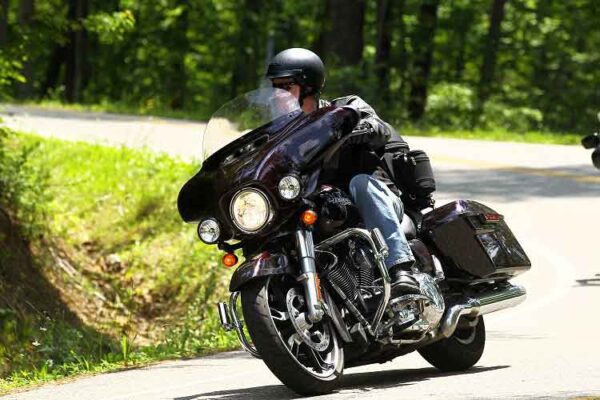
With the weather warming, motorcycle season is fast upon us. With the coming season, it’s a good time to remind all to practice motorcycle safety when on the road. For motorcyclists in particular, after a long Maine winter behind the wheel of a car, it’s important to refocus and reacquaint themselves with the “do’s and don’ts” of riding a motorcycle. When you take to the byways and back roads this spring and summer, here are 5 things you should remember NOT to do on a motorcycle.
Never assume drivers have “seen” you or your motorcycle.
In terms of vulnerability, there’s little doubt that motorcyclists are at a greater risk of accidents than the other vehicles they share the roadways with. The most common cause of motorcycle accidents is distracted drivers who simply do not detect or recognize a motorcycle approaching in traffic. Too often, other drivers easily misjudge or miscalculate the speed, and distance motorcyclists are moving when entering traffic patterns. Statistically, most drivers do not see a motorcycle before a collision or until it is too late to avoid a crash. It is crucial, then, for motorcyclists to never assume that the “other guy” sees them and remains alert and aware of other motorists at all times in traffic to ensure their safety.
Motorcyclists, and all drivers, can benefit from practicing a heightened awareness while on the roadway. This includes being aware of road conditions and traffic patterns, evaluating risk potential and options, and reacting with control and precision on the road. Be sure to use signals and maintain lane position when operating the motorcycle. One way to make your motorcycle more visible in traffic is to turn on your headlights during the daytime.
Never ride out of your comfort zone.
When hitting the roads, especially early in the season, it’s important to ride at a pace and maintain a speed that you are comfortable with. Being in a comfort zone means knowing and trusting your abilities. Your bike should fit you. It should not feel heavy or be more than you can handle. For example, the handlebars and controls should be easy for you to reach. When seated, your feet should rest flat on the ground, not on your tiptoes.
Knowing the road you’re on also plays a role in establishing a comfort zone. The more familiar you are with it—its curves and bends, surface conditions, intersections, and the like—the easier it is to focus on safety. Riding in your comfort zone will ensure a safer and more enjoyable ride.
Never drink or take substances, then drive.
As mentioned, being alert and aware is key to ensuring safety while driving a motorcycle. It is always worth saying that it is not only dangerous but foolish to operate any vehicle under the influence (DUI), let alone a motorcycle. Drivers are considered to be alcohol-impaired with blood alcohol concentrations (BACs) of 0.08 g/dL or higher. In no uncertain terms, in study after study, alcohol is the most significant contributor to crash risk for all vehicle types. For motorcyclists, the results are even bleaker. Among all motor vehicle types and classes, motorcycles represent the highest percentage of impaired driving fatalities.
Never wear the wrong gear for the wrong weather.
Wearing the right gear is essential for motorcyclists. On any given afternoon, bikers have the potential to be exposed to a combination of the elements—bright sunshine, wind, rain, hail, even sudden snow or sleet—which can present several riding hazards. The right gear then provides the best protection from the elements. But the material is also specifically designed to provide safety and comfort to the rider. Helmet, eye protection, ankle boots, gloves, long-sleeved jacket, and long pants are standard for safety but offer tighter wind seals at the neck, wrists, and ankles designed to fit comfortably.
If you’re in an accident, don’t assume you’re fine or it was your fault.
Though a motorcycle accident often has serious consequences and injuries, in some instances an accident may be minor. In that case, even in a minor accident, you should never assume that you’re fine. In fact, in any accident, you should never turn down or refuse medical treatment at the scene. In the adrenaline rush after an accident, many injuries do not become apparent until hours later. Never admit fault, either. Negligence is very often comparative and there may be plenty of negligence to go around. Extenuating circumstances like a poorly maintained road or multiple drivers negotiating an intersection from different directions can result in more than one driver making a mistake or miscalculation.
Featured Image: Attorney, Chris Lewis

